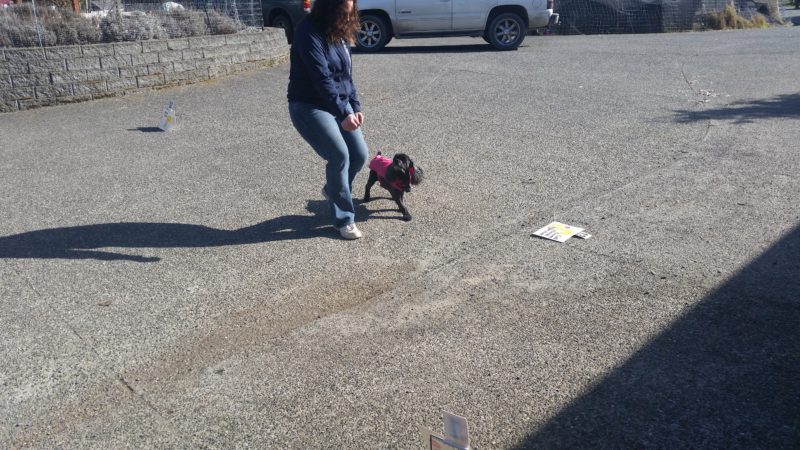Communicating with Dogs Using Body Language
Dogs are attentive to how we communicate with our body language and movement. This can be a training advantage or a hinderance depending on the application. Dog’s will respond differently depending on the relationship with the individual interacting with them. If your dog trusts you, they will respond much differently than to someone they don’t know or trust.
Many dogs are confused by the controversial way they are approached by strangers. It is very common for someone to see a stunning dog they want nothing more than to approach, pet and snuggle. They walk directly at them while staring into their beautiful eyes and tower over top of them reaching down to give them a pet, or worse a kiss.
Some dogs may not mind but approaching a dog in this manner is a huge gamble. It is very common for a dog to growl or snap when put in this awkward position. An insecure dog will feel very threatened by a domineering approach and if the option to flee is not available, he may bite out of fear. People commonly do not respect a dog’s space or understand these actions are very domineering and cause discomfort to many dogs.
A dominant or controlling dog may feel challenged by a domineering approach and bite thinking you have no right to intrude his space or you are challenging him.
An insecure dog will respond better to a lowered body posture, diverted gaze and allowing them to approach you on their terms.
Staring directly at a dog can be threatening to a dog. This is different than the soft gaze one might share with their dog or trained eye contact for engagement. Diverting your eyes can help an insecure dog be more comfortable with you.
Towering or bending over a dog is also challenging or threatening to a dog. Lowering your posture and diverting your eyes makes you less threatening and more approachable.
Walking quickly at them is also very unsettling and they may get frightened, feel threatened and react.
When working with your own dog, they pay attention to your facial expressions, the direction you are looking, the type of look, your reaction to a situation, the position of your body, the direction you are facing, where your shoulders, feet and arms are pointing, your movement and where the reward is.
Your movement influences the motion of your dog. Dogs are drawn to movement, which can be used to motivate a dog to play, to communicate a direction to move in or trained as commands. If you move away from them, they are inclined follow. If you move towards them, they are inclined to move away. When sending to a place, they follow as you motion or move towards the object. When waiting at a door they will move back when you step towards them. Quick movements will stimulate a prey driven dog but may cause a more insecure dog to startle, cower, try to flee or bite if he feels trapped.
You can train them to stay in front of you and mirror your movement or follow your hand to teach them to rotate, step forward, backwards and sideways.
You can use spatial pressure to influence your dog’s movement and teach wanted behaviors. You can draw them towards you by lowering your posture and leaning back or prompt them to move away by stepping towards them. Strategic positioning of your body and movement will result in a variety of responses from your dog, but too much pressure can result in confusion and avoidance behaviors.
Be conscientious of your dog’s sensitivity level and focus on building confidence and clarity in what you are trying to achieve. Poor timing, placement or presentation can create confusion, fear and avoidance. Respect your dog’s body language and don’t be forceful. If he is avoidant give him more space, lower your expectations, take it more slowly and celebrate small successes.
Dogs are very perceptive and pick up on all our bad handling habits. If you reach for your treat pouch during an exercise, they are likely to become distracted by your hand. If you consistently make a movement before releasing, they are likely to break upon your movement. If your movement is jerky and sporadic, they’ll be inclined to jump, dart and grab. Be thoughtful in your movement and how you apply it to training.
Everything
about you influences your dog. The way
you look, how you feel, the tone of your voice, your movements and your
reactions to a situation all relay information to your dog. They behave in
response to your reactions and how they have been trained. Without guidance, they often respond in
undesirable ways. Help your dog make better choices by remaining calm, standing
tall, taking charge, staying aware of your surroundings, using trained commands
to communicate with him, practicing frequently in various environments and being
consistent.

